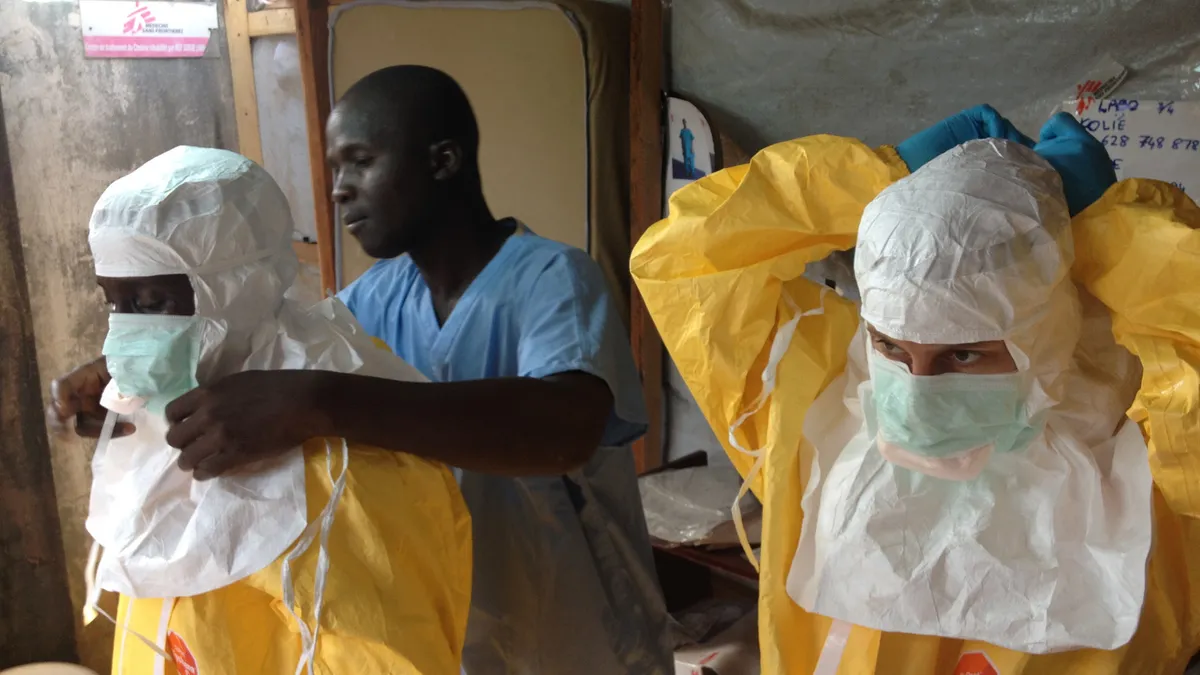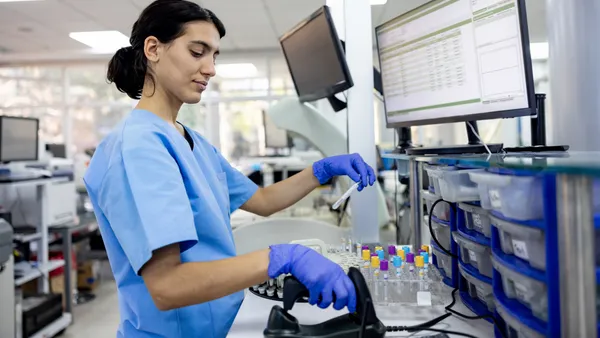Dive Brief:
- An international team of researchers has developed a portable diagnostic test to detect Ebola, malaria and other pathogens in under 30 minutes from a single blood sample, without the need for laboratory infrastructure and trained personnel.
- In a study, the immunoassay technology used surface-enhanced Raman scattering (SERS) tags to detect antigens from Ebola, Lassa and malaria simultaneously from 190 clinical blood samples collected from the 2014 West African Ebola outbreak. Results demonstrated Ebola detection with 90.0% sensitivity and 97.9% specificity and malaria detection with 100.0% sensitivity and 99.6% specificity.
- The research was funded by the Paul G. Allen Family Foundation and conducted by a team from Boston University, Columbia University and the National Institutes of Health in collaboration with clinicians from Senegal, the Hemorrhagic Fever Lab at Université Gamal Abdel Nasser de Conakry, Guinea, and device maker Becton Dickinson. Results were published in the journal Science Translational Medicine.
Dive Insight:
The inability to quickly diagnose the highly contagious and fast-spreading Ebola virus and distinguish it from the malarial parasite was a major problem that contributed to the West Africa Ebola crisis from 2014 to 2016, according to the foundation. A rapid test can help clinicians identify who should be quarantined immediately and who should be sent home with antimalarial medicine.
The team of researchers set out to design a rapid, portable diagnostic test that could be stored without refrigeration en route to remote clinics in rural outbreak areas. The SERS system mixes the blood sample with magnetic beads coated in antibodies that attract four infectious agents. If the blood contains malaria-causing parasites or the Ebola, Marburg or Lassa viruses, the pathogens attach to the magnetic beads.
In the process, antibodies on glass-encased gold nanoparticles also attach to the pathogens, creating a link between the magnetic and gold beads. The materials are placed in a small machine and hit with a laser beam that identifies the presence of malarial parasites or Ebola, Marburg or Lassa viruses by the way the light scatters off of the different molecules. The addition of gold particles boosts the light signals’ detection abilities.
The system’s components can be battery-operated and fit inside a backpack. It can also be customized to detect any combination of pathogens, whether bacterial, viral, fungal or parasitic, according to the researchers.
Other rapid tests such as lateral flow are typically not well-suited for differentiating among multiple diseases with similar symptoms, they said.
“The reason I find this system so promising is that it can diagnose more than one thing, which is important in the real-world context of infectious diseases,” said study author John Connor, a Boston University School of Medicine associate professor of microbiology.










